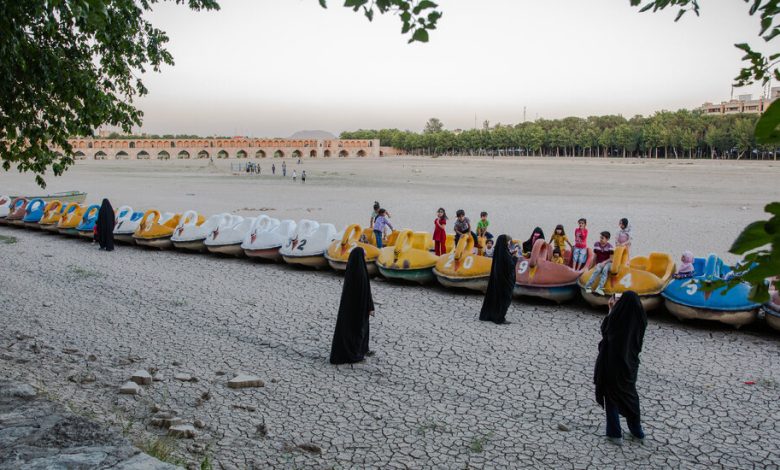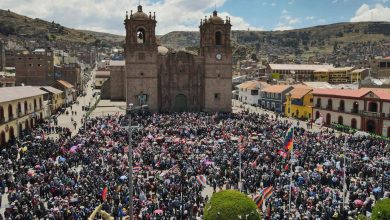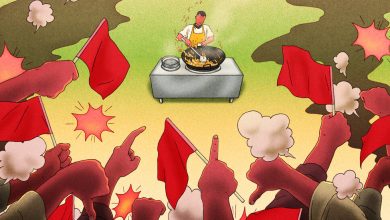It’s Scorching in Iran, and There’s Less and Less Water to Help

For a month and 10 days of unrelenting summer heat, Sepideh, a physician in southern Iran, and her dentist husband have left the house only for work (and only in the mornings) and for groceries (and only when the fridge is utterly bare). At one point last week, her car’s dashboard thermometer read 57 degrees Celsius, about 135 degrees Fahrenheit.
She snapped a photo for Instagram. “Only 57 degrees!” she posted.
At least she had air-conditioning at home, a necessity not available to all. A combination of widening poverty and rising heat is crushing much of southern Iran, where sprawling desert, joined with the humidity of the nearby Persian Gulf, is especially prone to heat waves and droughts intensified by climate change.
Although the mercury was lower elsewhere in the country, the misery has still been great. Iranians have few ways to cope: The government’s longstanding mishandling of water resources has made taps across the country run salty or dry, experts say, while Iran’s stalled economy and double-digit inflation have deepened poverty that puts indoor jobs and air-conditioning out of reach for many.
Iran suffers from what Kaveh Madani, a United Nations water expert who formerly served as deputy head of Iran’s environmental ministry, calls “water bankruptcy,” in which, he said, misguided policies promoting agriculture and development have led water consumption to outstrip supply for so long that there is no way to reverse the depletion.
As groundwater and reservoirs dry up, droughts intensify and climate change pushes temperatures higher. Iranians in rural areas are increasingly unable to afford the trucked-in or store-bought water on which they must rely. Water shortages fueled protests in the historic city of Isfahan and in Khuzestan Province in 2021, and more discontent with the government is brewing over its failure to address the blistering heat.
“The government does nothing: no services, no advice, no special care,” said Zahra, 32, an artist in the southern coastal city of Bandar-e Dayyer, where the taps have spouted salty, undrinkable water this summer. “We have to take care of ourselves,” added Zahra, who, like other Iranians interviewed for this article, asked to be identified by only her first name to avoid trouble with the authorities.
Among those who lack running water are patients Sepideh has seen this summer in the villages around Masjed Soleyman, her home city in western Iran. Villagers have been forced to turn to wells that she said were choked with dead rats, lizards and cockroaches.
“All I see around me is misery and poverty,” she said. “Wish I could say something hopeful. This is the reality, though.”
Government officials have said that the poor, rural southeastern province of Sistan and Baluchistan — where last month a member of Parliament said it was so hot that a streetlight in onecity had melted — will run out of municipal water entirely by September.
In Bandar Kangan, a southwestern city on the gulf coast, water used to be cut off on summer days from late afternoon until 5 or 6 a.m., said Azam, 39, a teacher who lives there. In the last few years, however, the taps have run for just a couple of hours each morning.
“We save water in our tanks and have learned how to use minimal water,” he said. “Actually, there is no water at all to be wasted.”
Adapting to the scorching heat and suffocating humidity is something that people across southern Iran learned to do long ago: going out only in the early morning or late at night, meeting friends next to rivers and canals.
They know that a couple of hours in such heat can mean headache, weakness, dizziness and a sunscreen-defying burn; that the humidity can make it feel as if they were inhaling steam with every breath; that even the water running from the taps during the day can scald; that plastic slippers left outside will deform in the sun; that sunglasses left in the car all day can melt.
Last Sunday, humidity and high temperatures merged for a heat index of 152 degrees Fahrenheit at Persian Gulf Airport on Iran’s southern coast, a double-take-inducing heat that was past the limits of what humans can tolerate. In Bushehr, a coastal province that includes Bandar Kangan, schools and offices closed down for a day this month in response to a forecast of 122 degrees and have limited their hours on other days.
But many workers have no choice but to endure the sun.
One video published on a Telegram channel called the Free Union of Iranian Workers showed a man in Asaluyeh, another city in Bushehr Province, who said that he had to work outdoors from 5 a.m. to 7 p.m. every day.
“This is a worker’s situation,” he said. “We die a hundred times a day.”
For those who can, the simplest adaptation is to hide out in the air conditioning and hope to dodge the power cuts that plague southern Iran every summer.
The ancient Persians who lived on the land that is now Iran are believed to have pioneered the use of windcatchers, tall towers that trap cool breezes and funnel them down to cool buildings, thousands of years before electricity. Although windcatchers are now gaining currency among climate-conscious architects in other countries, air conditioning won out long ago in Iran.
“We barely leave our houses,” said Zahra, the artist. “So I cannot compare the heat with previous summers. All I can say is that it is boiling.”





